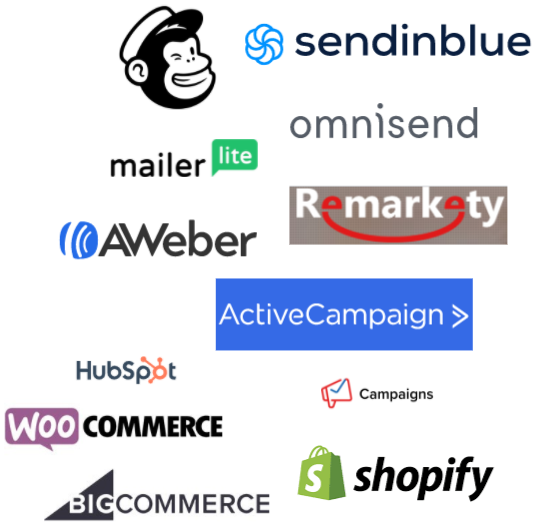Our Process for Effective, Productive Email Marketing Campaigns and Automations
|
Step 1: Planning your email marketing strategy
Email marketing is not a sprint but a marathon and therefore the path and the goal must be defined clearly so that everyone understands what we are trying to accomplish, why, and how we are planning on getting there. Proper planning ahead of time prevents emotional drift and inspires confidence in the entire operation. Step 2: Defining email cadence, tone, design and fit to purpose Once the goals and business objectives are determined, then it is time to plan the types of communications that will be sent. Each type of email campaign or automated workflow needs to help bring everyone closer to accomplish the overall goals. This includes content, cadence, and testing planning for email broadcasts and the deriving communication cadence and triggers that trigger emails (a single action, a regular newsletter, or a multi-stage campaign). Included at this point are the tone of the copy, and the overall design options that can help the brand succeed. It is at this point that you should choose your email marketing tools, so they fulfill your plans. Step 3: Collecting target group and segmenting the data The next step is to determine who will be receiving the emails, how they will be acquired (within GDPR and Can-SPAM rules), and how they can be segmented to improve the effectiveness of the individual email broadcasts that were defined in the previous step. Depending on the email client used, segmentation and lists are set up at this point and placed in the system’s database system for email address evaluation and list cleanup. Any additional data that can be included in the list and that can help with segmentation is also entered into the database at this point, usually in the form of a spreadsheet in .csv format. Step 4: Producing email design and content For every email campaign, appropriate design content for the target group and goals has to be produced. Usually, this means that a content calendar will be generated to coordinate multiple teams and make clear what content will be used when, and why. For example, to spark potential demand during peak periods, or create additional campaigns to improve results during current fallow periods of business. In terms of content, particular attention needs to be paid to variations of subject line and content for emails in a campaign or a workflow, so optimization is built-in to the planning of the campaign and its measurements. Another aspect that has to be taken into consideration is how much content will appear in the mobile version of the email. |
Step 5: Email Client Set-up
When all the elements of the campaign are brought together and have gone through an approval process (via mockups), then templates are built into the email client. In terms of design, usually, this means translating a design intention into a drag-and-drop email builder within the client, or entering an HTML template into the system. Why the drag and drop editor? Because it automatically translates the design into a mobile format that will be acceptable to the ISP. You can also obtain the same results via HTML templates, however, they are not as change-friendly as the ones created with the drag-and-drop editors. Step 6: Email Delivery Using the correct tool for email delivery means that the process of reputation management falls within either your own purview, or is administered by the tool owner, like Klaviyo or SendinBlue. The correct delivery schedule will prevent your emails from the spam folder, and the proper email acquisition method will help you have a clean list you can use over and over to improve results for the business. Step 7: Measure Results Finally, the results of the emailing broadcasts, defined at the beginning of the process, should be measurable and attributable to the email campaigns. In terms of e-commerce, a tool like Klaviyo connected to an ecommerce system (such as Shopify or WooCommerce), delivers the kinds of goal-oriented numbers that help learn the value of each email broadcast. The attendant numbers, such as the rate of undeliverable or opened email, the quantity and distribution of link clicks, the location of recipients, as well as other responses built-in data in email are captured and analyzed only as they help understand how to improve the overall results of the campaign, as defined at the beginning of the process. Some of the tools we regularly use are (we use more, but these are common): |


